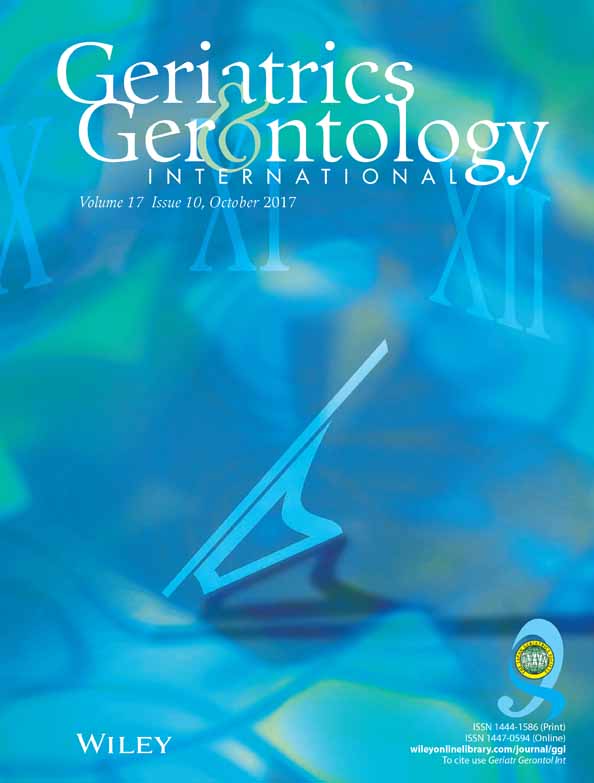Mobility, balance and frailty in community-dwelling older adults: What is the best 1-year predictor of falls?
Abstract
Aim
The present study aimed, first, to compare the ability to predict falls over 12 months for three measures – mobility, balance and frailty. Second, among the three domains of frailty – physical, psychological and social – we investigated what is the strongest predictor of falls.
Methods
A total of 192 community-dwelling older adults (age 73.0 ± 6.2 years; 62% women) were involved in this longitudinal study. The Timed Up and Go (TUG) test, One Leg Standing (OLS) test and the Tilburg Frailty Indicator (TFI) were respectively used to measure mobility, balance and frailty. The TFI is a questionnaire based on a multidimensional conceptualization of frailty consisting of 15 items in three domains (physical, psychological and social). Falls were self-reported during the 12-month follow up. Logistic regression models, adjusted for interesting variables, were carried out to predict the risk of falls.
Results
History of falls and chronic conditions were the indicators more strongly related with falls over 12 months. The TFI resulted as a stronger predictor of falls when compared with the TUG and OLS tests. The explained variance of the three models was 31.2%, 22.4% and 22.2%, respectively. The TFI was significantly associated with falls (P < 0.001), whereas the TUG and the OLS were not (P > 0.05). Among the three frailty domains, physical (P < 0.001) and psychological (P = 0.041) domains were significant predictors of falls.
Conclusions
The findings showed that the TFI might be an effective tool for predicting falls at 12 months in aged populations, probably because it is able to capture the multifactorial facets that can lead to falls. Geriatr Gerontol Int 2017; 17: 1463–1469.




